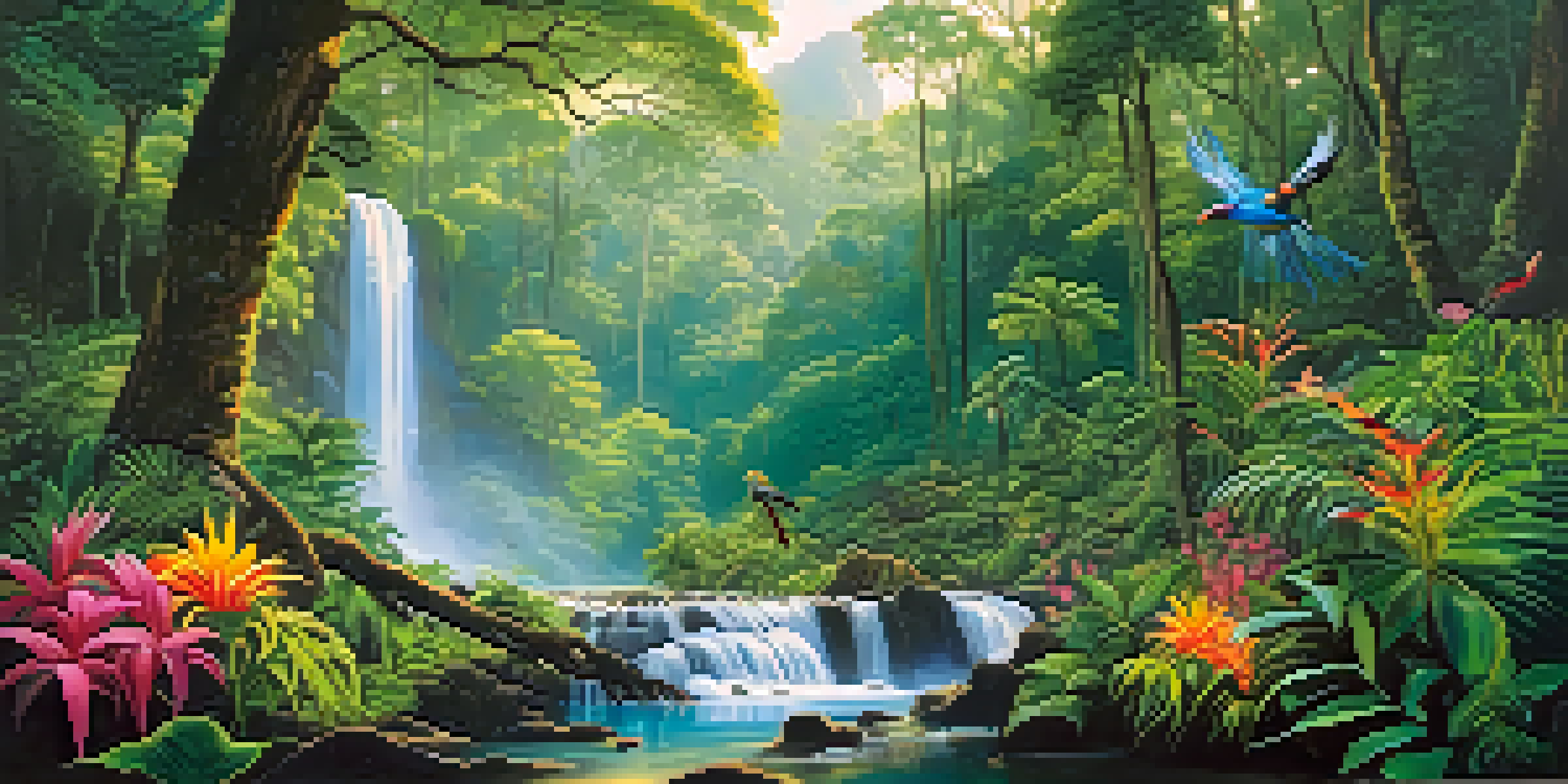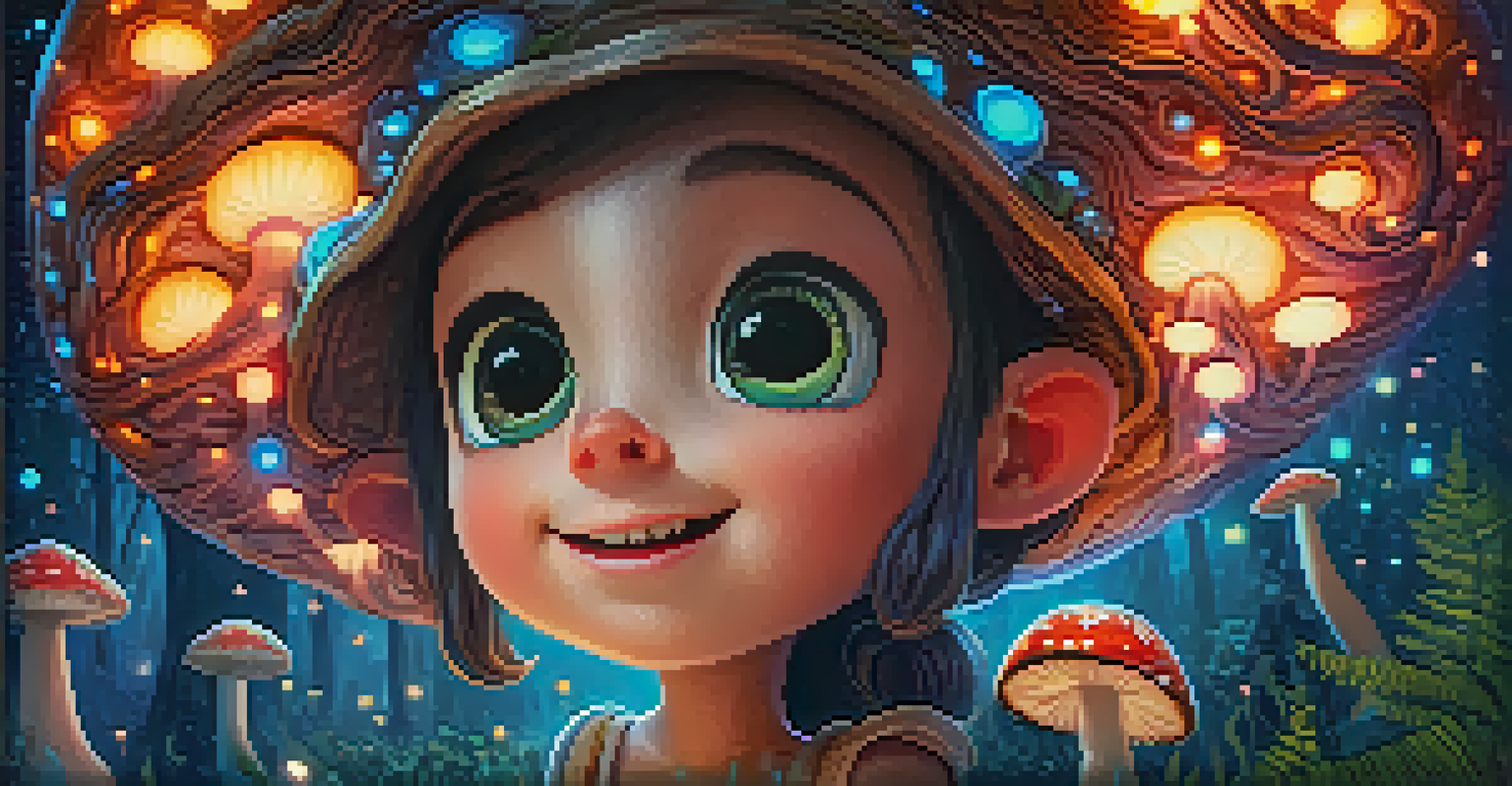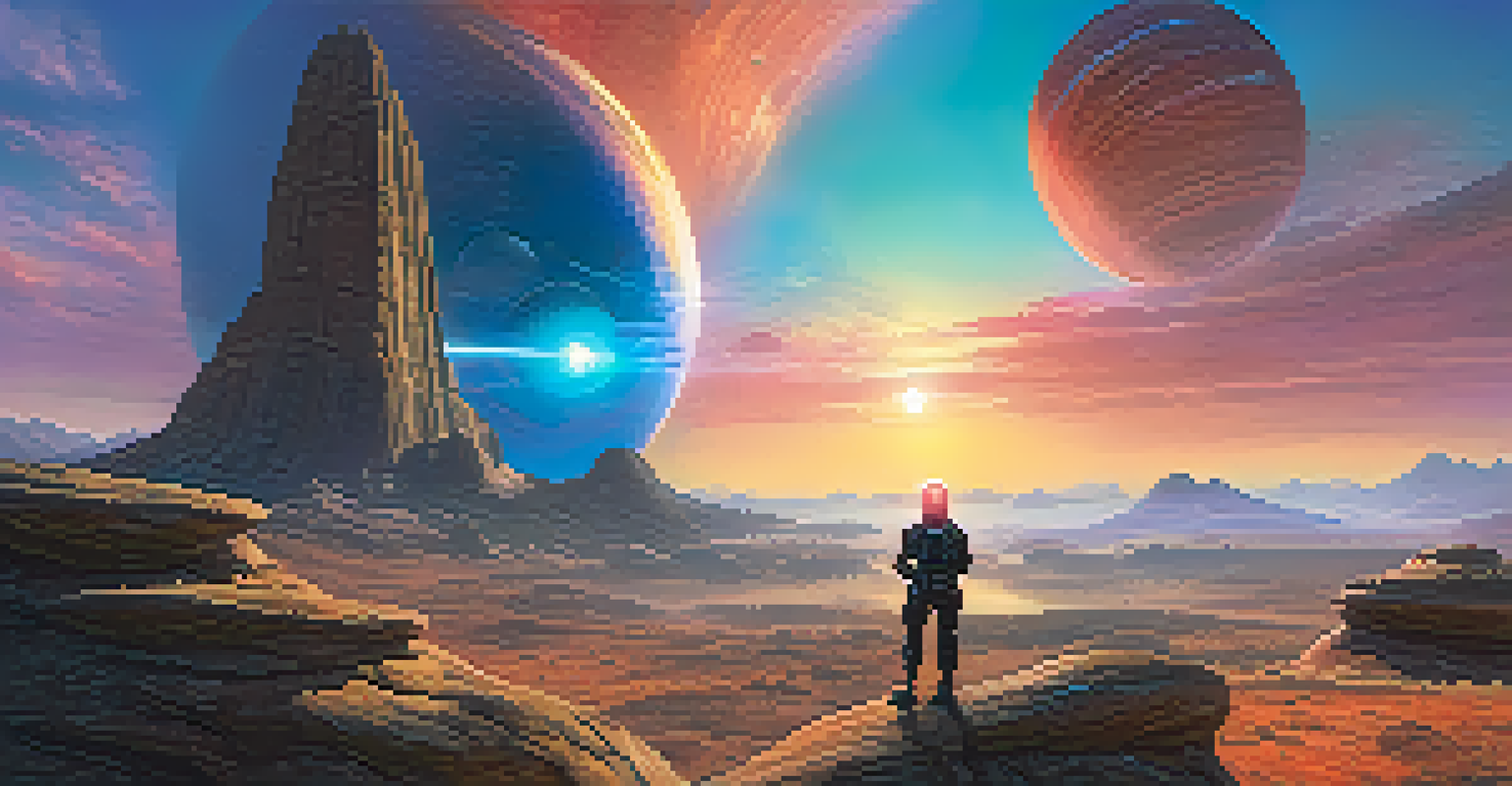Top Visual Effects Techniques Revolutionizing Filmmaking

The Rise of CGI: Creating Worlds Beyond Imagination
Computer-generated imagery, or CGI, has become a staple in filmmaking, allowing creators to build entire worlds that were once only dreams. Think of iconic films like 'Avatar' or 'Jurassic Park,' where CGI brought fantastical creatures and lush landscapes to life. This technique not only enhances storytelling but also captivates audiences with its stunning visuals.
The magic of filmmaking is that it allows us to dream and to create worlds that don't exist, but feel real to the audience.
What makes CGI so revolutionary is its ability to blend seamlessly with live-action footage. This fusion creates a more immersive experience, where viewers can suspend disbelief and truly engage with the narrative. For instance, in 'The Lion King' (2019), the lifelike animals were a product of advanced CGI, showcasing how far technology has come.
As CGI continues to evolve, filmmakers are exploring new possibilities, from hyper-realistic effects to entirely animated films that push the boundaries of creativity. With tools becoming more accessible, we can expect to see even more breathtaking visuals in the future.
Motion Capture: Bringing Characters to Life
Motion capture, often shortened to mo-cap, is a technique that records the movements of actors and translates them into digital characters. This technology allows filmmakers to create incredibly lifelike performances, as seen in films like 'The Lord of the Rings' with Gollum. The ability to capture subtle facial expressions and body language adds depth to animated characters.

The process involves placing sensors on an actor's body, which track movement and convert it into data for animation. This not only saves time during post-production but also allows for performances that resonate with viewers. Imagine watching a character whose emotions feel as real as those of a human actor; that’s the magic of motion capture.
CGI Transforms Filmmaking
CGI has revolutionized storytelling by enabling filmmakers to create immersive worlds and lifelike characters that captivate audiences.
As this technique becomes more refined, we are likely to see even more nuanced performances from animated characters, bridging the gap between live-action and animation. This opens up new storytelling avenues, making the possibilities in filmmaking nearly limitless.
Virtual Reality: Immersing Audiences in the Story
Virtual reality (VR) is changing the way stories are told by immersing viewers in a three-dimensional environment. Imagine stepping into a scene and experiencing it from a character's perspective; that’s the power of VR. Films like 'The Lion King' and 'Star Wars: Trials on Tatooine' have started exploring this immersive medium, allowing audiences to engage with the story on a whole new level.
The greatest thing about cinema is that it can make the impossible possible.
The technology behind VR is continually advancing, providing filmmakers with innovative tools to create interactive narratives. This not only enhances viewer engagement but also creates opportunities for unique storytelling methods. As audiences become more accustomed to interactive experiences, filmmakers are prompted to think outside the box.
With the potential for branching storylines and personalized experiences, VR could redefine what it means to watch a film. The future of storytelling may very well lie in the hands of the viewer, making their choices a part of the cinematic journey.
Augmented Reality: Blending Fiction with Reality
Augmented reality (AR) overlays digital information onto the real world, bridging the gap between reality and fiction. This technique has gained traction in films, allowing audiences to experience elements of a story in their own environment. For example, movies like 'Ghostbusters' have utilized AR to create interactive marketing campaigns that engage viewers in a new way.
The beauty of AR lies in its accessibility; it can be experienced through smartphones or wearable devices, making it a versatile tool for filmmakers. This technology not only enhances the film-watching experience but also encourages audience interaction, blurring the lines between spectator and participant.
Motion Capture Elevates Animation
Motion capture technology allows for realistic performances in animated films, bridging the gap between live-action and animation.
As AR technology improves, we can anticipate more films incorporating these elements into their narratives. Imagine watching a movie and being able to see characters or scenes come to life right in your living room; that’s the future AR promises for filmmaking.
Digital Compositing: Seamless Visual Storytelling
Digital compositing is the process of combining multiple visual elements from different sources into a single image. This technique allows filmmakers to create complex scenes that might be impossible to achieve in real life. Think of films like 'Inception,' where dream layers were expertly woven together using compositing techniques to craft mind-bending visuals.
By layering images, filmmakers can manipulate reality and create stunning visual effects that enhance storytelling. This technique is essential for action sequences or fantasy films where the environment plays a crucial role. It allows for creative freedom, enabling directors to craft scenes that might otherwise be too costly or dangerous to film.
As software becomes more sophisticated, the possibilities for digital compositing are expanding. Filmmakers can now create intricate visuals with greater ease, pushing the boundaries of what’s achievable in film production.
Practical Effects: The Art of Realism in Filmmaking
While digital effects often steal the spotlight, practical effects remain a vital part of filmmaking, providing tangible realism that CGI sometimes can't replicate. Techniques like animatronics, model-making, and pyrotechnics have been used in classics like 'Star Wars' and 'Jurassic Park' to create unforgettable moments. The tactile nature of practical effects often resonates more with audiences, as they feel the weight of reality in every scene.
Practical effects also allow actors to interact with real objects, enhancing their performances and creating a more believable experience for viewers. The authenticity that comes from using real materials can add a layer of depth to storytelling that digital effects can sometimes miss.
AR and VR Redefine Viewer Experience
Augmented and virtual reality are changing how audiences interact with stories, offering immersive and personalized cinematic experiences.
As filmmakers continue to blend practical effects with digital technology, we can expect to witness a resurgence in the appreciation for craftsmanship in filmmaking. This combination can lead to a richer cinematic experience, where the lines between reality and fantasy beautifully blur.
3D Animation: Redefining Character Creation
3D animation has transformed how characters are created and brought to life on screen. This technique allows animators to build intricate models and environments, resulting in visually stunning films like 'Toy Story' and 'Frozen.' The ability to manipulate every detail in a character’s design means that filmmakers can create personalities that resonate deeply with audiences.
Furthermore, 3D animation offers flexibility and creativity, allowing for the exploration of unique storytelling styles. Whether it’s a whimsical world filled with vibrant colors or a darker, more serious narrative, 3D animation can mold itself to fit the vision of the filmmaker. This versatility is one of the reasons it has become so popular in modern cinema.

As technology continues to evolve, we can expect 3D animation to push the boundaries of visual storytelling even further. The future of filmmaking may well be a harmonious blend of artistic creativity and technological innovation.